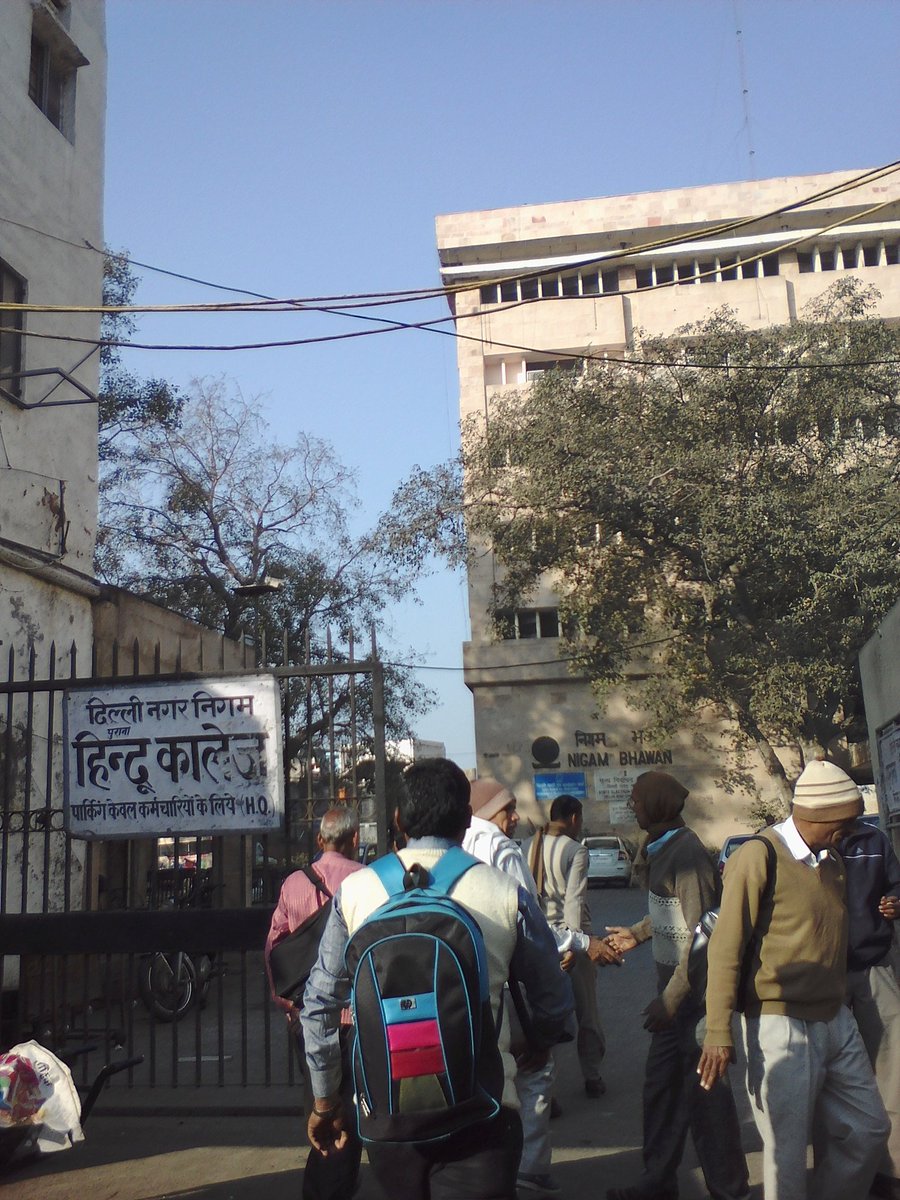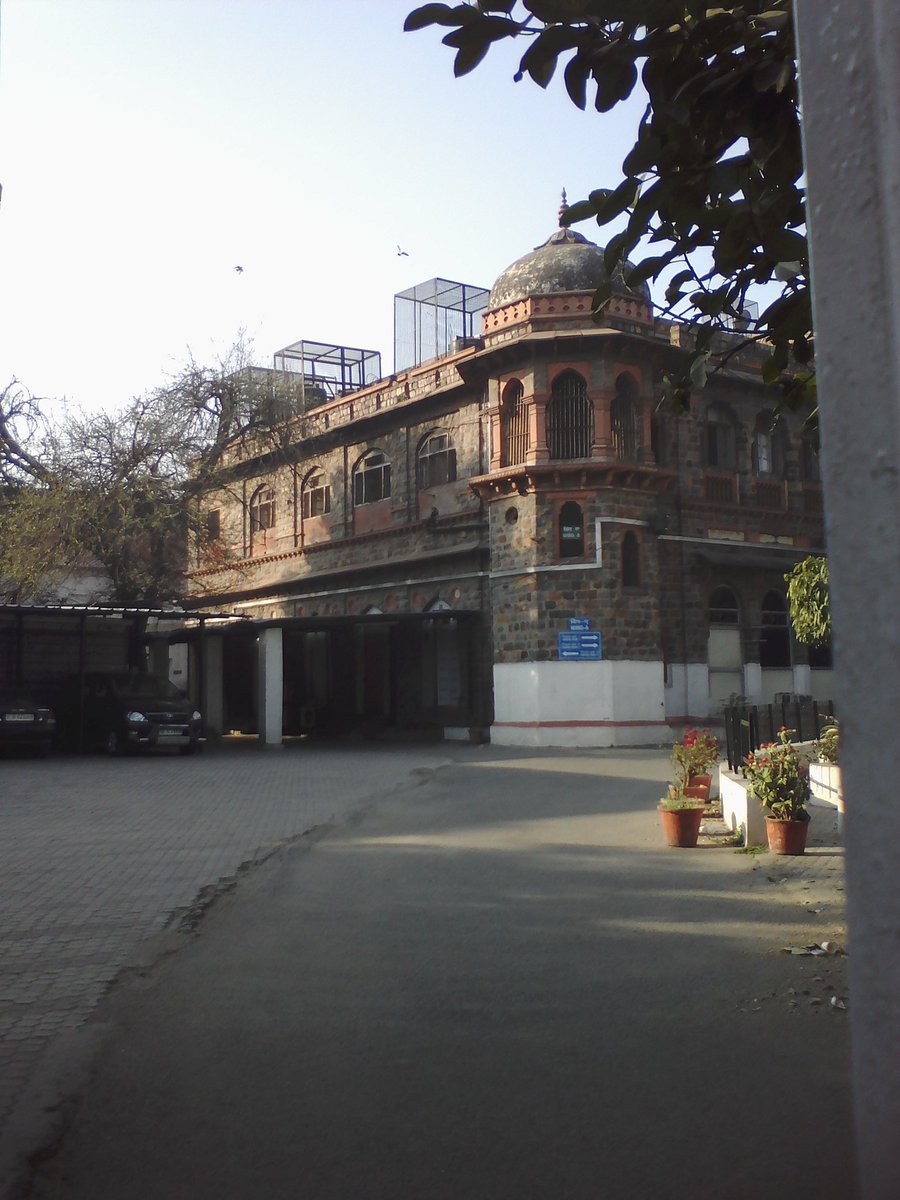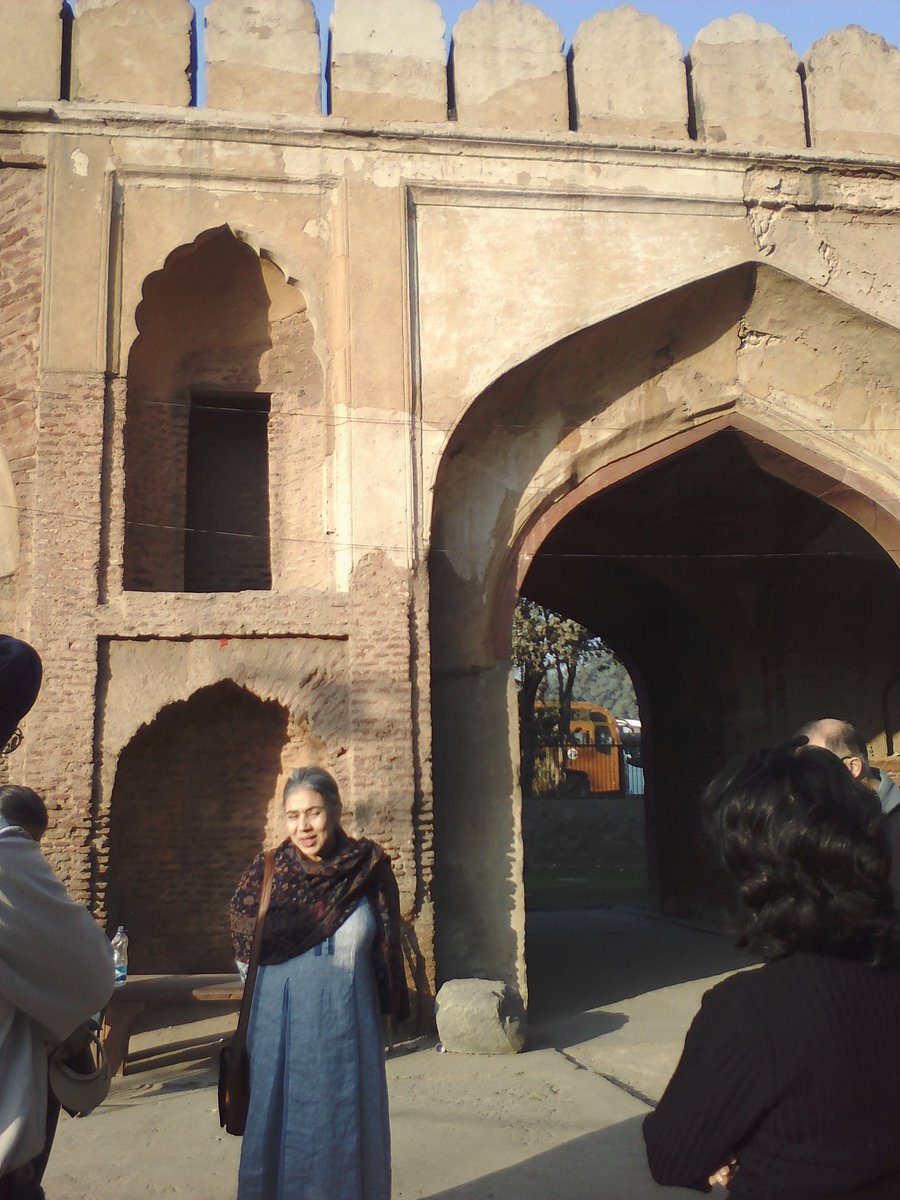
We have tried to discover Shahjahanabad visually (for our Sahapedia module) through Walks by scholars and experts on its different aspects. So, when we saw the program of Delhi Walk Festival organising a walk around Kashmere Gate with Swapna Liddle emphasizing on the Indian view of the 1857 Revolt, we thought we should cover it. It was a two-hour walk.
1857 is a very important period in the history of this city, as it marked not just the end of the Mughal Empire but the decline of the city as well. British had shifted their capital to more friendly city of Calcutta, post-1857 and it remained their capital until 1911. They relocated the capital back to Delhi,but to the new Modern Lutyen's Delhi.
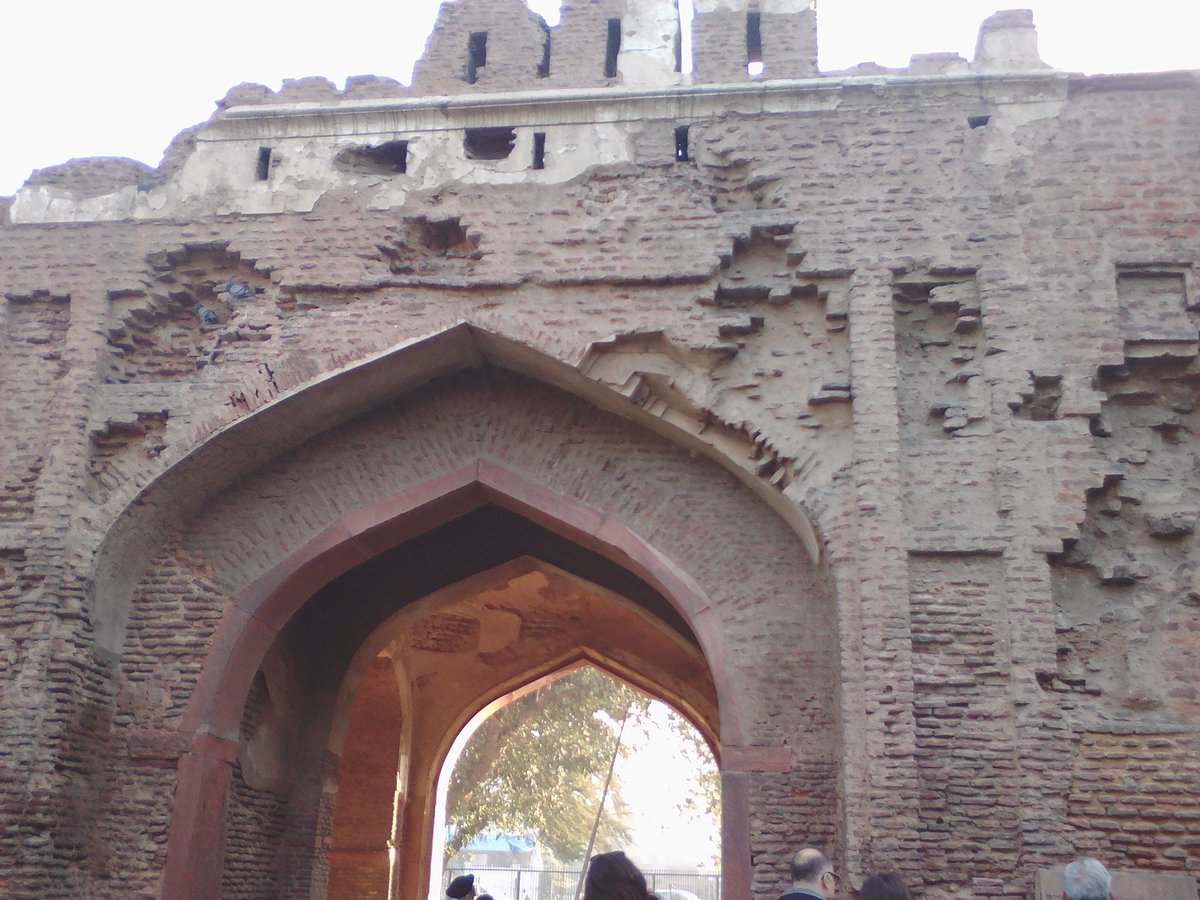
We were supposed to meet at the Kashmere Gate Metro station at 8am. It was interesting to see people from different walks of life taking an interest in history, so from scholars, students, writers, etc. a small group of around ten to twelve people were taken back in time by Swapna Liddle to introduce them to the narratives' of the Indian side of 1857.
We walked from the Metro station up to the remaining part of the Kashmere Gate which still stands with its wounds of British shelling still showing.
Kashmere Gate was one of the gates of Shahjahanabad which became a site of tussle between the Rebel soldier's and Britishers. Britishers attacked from outside the city gates, the soldiers' had come to Delhi and had declared ageing Bahadur Shah Zafar as their leader in May 1857. Before they oiled the old weapons guns, etc. for the war, they sacrificed a goat, did puja and distributed tons of sweets inside the city as goodluck omens and thought this would help them win against the British. In the four months of tussle Britishers gained ground by September, 1857 and soldier's Rebellion was defeated!
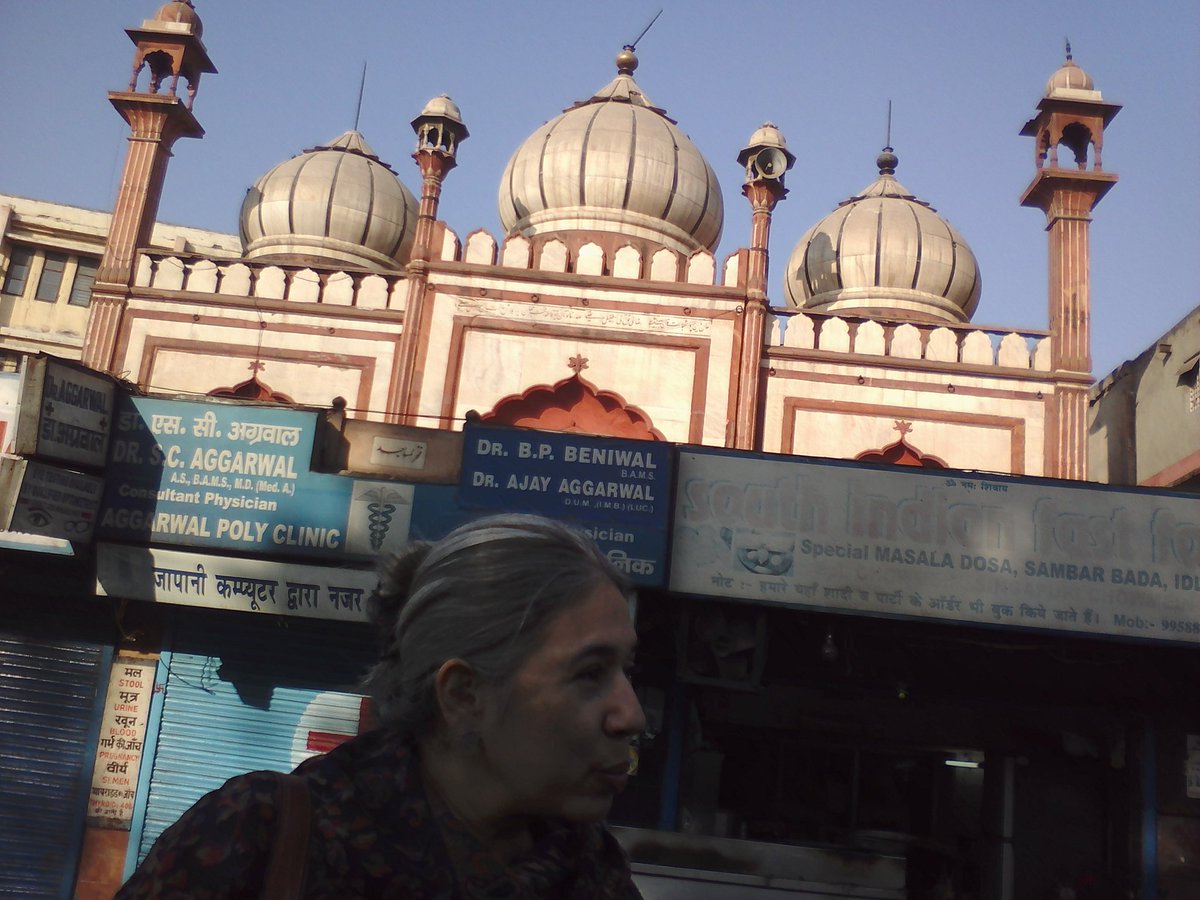
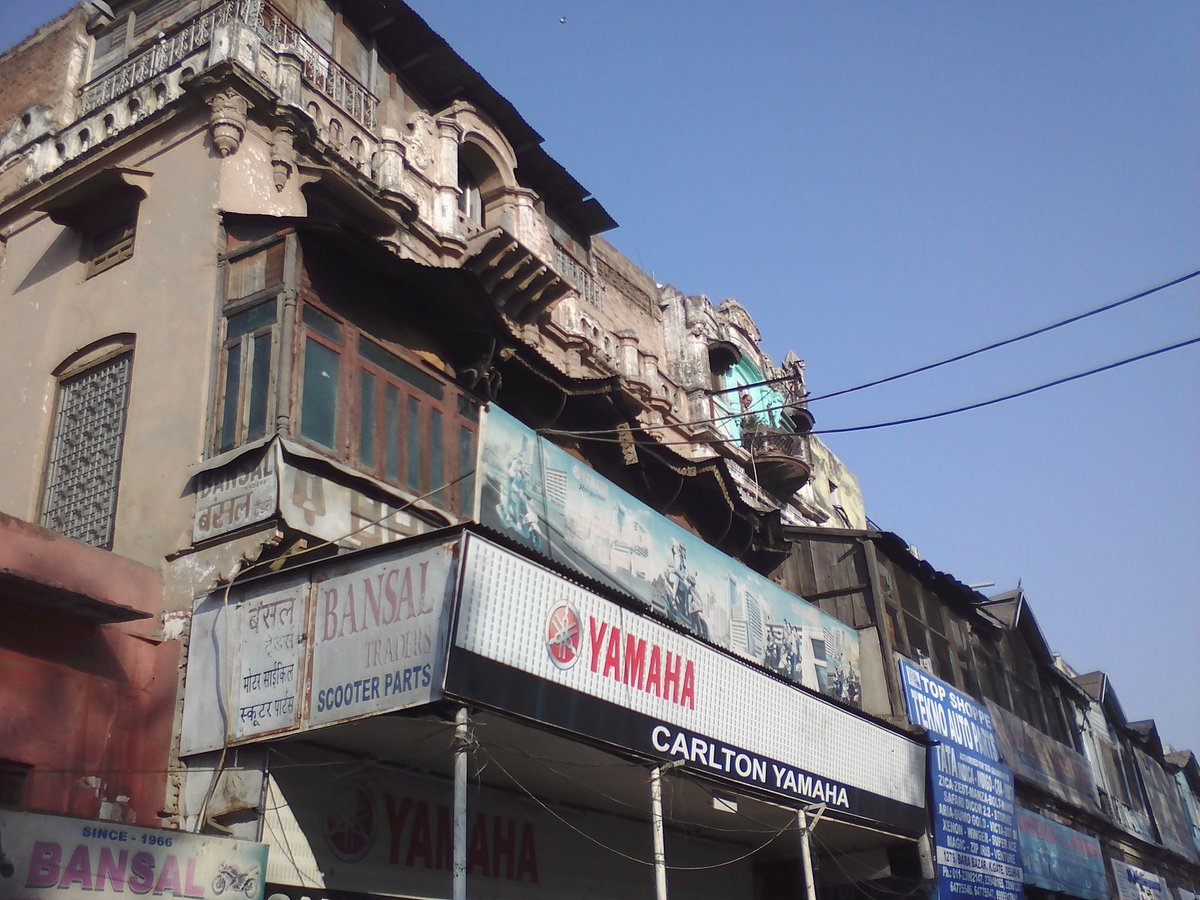
From Kashmere Gate we walked towards the Bara Bazar market, built by Lala Sultan Singh in the 1890s. It was the Pre- Connaught Place market of Delhi. One of the attractive monument on this lane is Fakhar ul Masjid (Pride of Mosques) built by Kaneez Fatima in the memory of her deceased husband Shujaat Khan, Aurangzeb's Commander in Chief in 1728.
Opposite the road was St.James Church built by James Skinner ( an Anglo-Indian, referred to by locals as Sikander Sahab). Oldest Church of Delhi built in 1836, during the Revolt Church had been damaged as it was seen as a symbol of British Empire.
From here, we walked to the buildings of MCD Office and Election Commission buildings, previously the campuses of Hindu College and St.Stephens' (Both colleges have been neighbors' and rivals since their establishment, it seems) since the nineteenth century.
In the opposite lane adjoining the Church are present day campuses of Ambedkar University and Indira Gandhi Institute of Technology. Delhi College (now Zakir Hussain College) was also in the same vicinity. This part in those days, was considered quite posh, upper class neighbourhood. David Ochterlony in 1803, nobleman Ali Mardan Khan in 1640s lived here and Dara Shikoh as well had a library here.
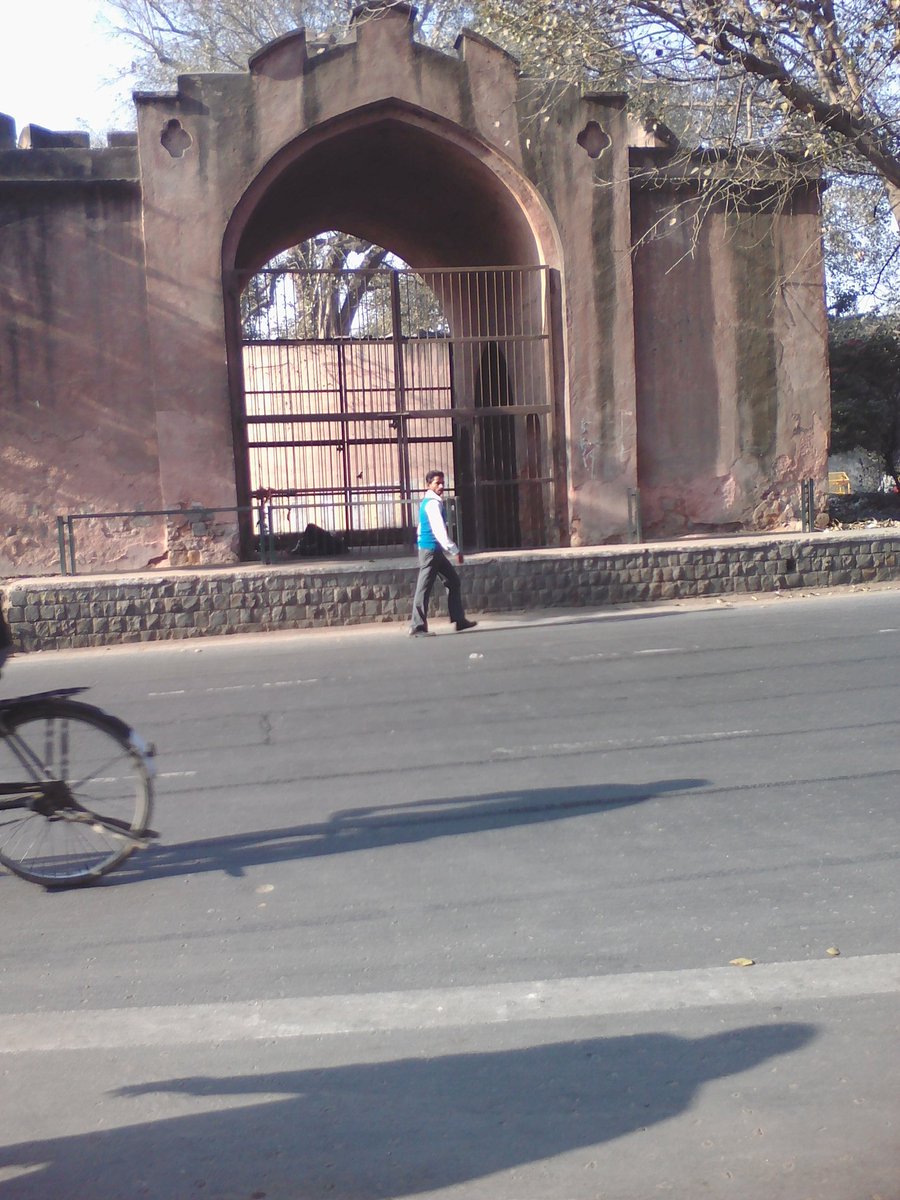
As we walked further, we reached the Magazine monument opposite Post Office, Kashmere Gate where ammunition was stored. This place was blown up by the British so that Soldiers' could not use it. Few steps from the Post Office is the Nicholson Cemetery, named after one of British heroes of 1857, General Nicholson.
We kept walking from here, till we reached Red Fort. In front of the Red Fort, circling Swapna in the middle, we heard her reading out excerpts from different Indian sources describing the events of 1857. The poetry lamenting the loss of the city came to be known as "Sheher e Ashob". The King was treated rudely (even referred to as "Buddha") by the soldiers. He disliked the commotion around his palace, which these fellows had made their home and were ruining his well kept gardens! Even the common people of the city wanted peace, as city had not recovered from Nadir Shah's invasion and now with this war was suffering even more. Mirza Ghalib in one of his letters' had described the situation of the 1857 city in his inimitable style.
Opposite Red Fort, the Chandni Chowk area was destroyed/plundered by the British, hundreds were hanged and thousands were murdered as punishment for defying the British. Bahadur Shah was imprisoned at Rangoon and his sons shot dead. Thus, ended the Mughal Rule in India.
We walked further down the Chandni Chowk street, with Swapna pointing at different monuments. The Jain traders' community of Chandni Chowk even at that time was quite powerful, no harm came to their neighborhoods and their temples. The Urdu Bazar market (now at Jama Masjid) was completely destroyed by the British. Nai Sarak (new street) was built by the British in the post-1857 period and was lined with new British style buildings.
The Town Hall clock tower (Ghantaghar), oldest in India built in the 1870s which got partially destroyed later by an earthquake and fully demolished in the 1950s. The town hall building as center for the British was built in the 1860-65 in the center of the street of Chandni Chowk. Gates at various Katras/ Kuchas still stand to guard residents of those streets against the "outsiders/invaders".
We ended the walk at Chunamal Haveli. Lala Chunamal a very foresighted businessman in the post 1857 scenario, bought a lot of property at low rates. His Haveli with a big facade on the main street still stands, opposite the lane of Ballimaran. We finished a little after 10am. We were treated with refreshments by the INTACH and DelhiILoveYou team at the Haveli as post- Walk discussions followed. It was a working day and I had a class, so had to rush back!





